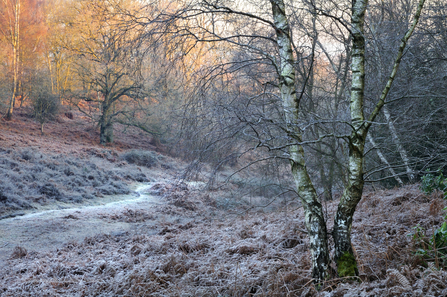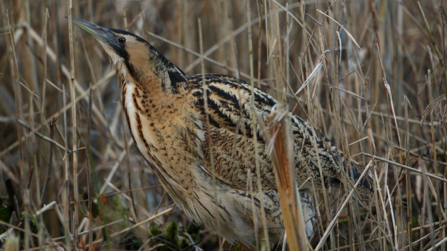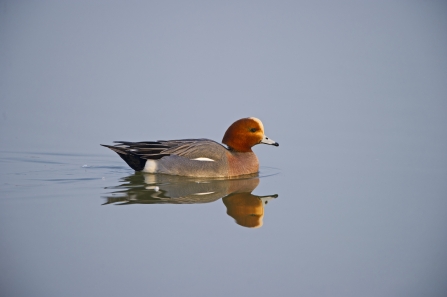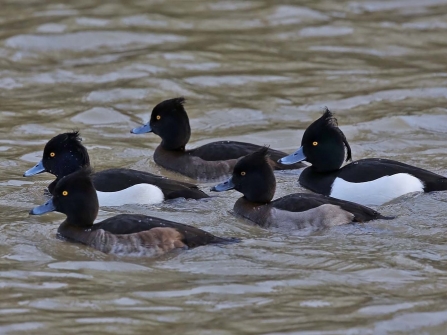
Bowdown Woods in winter. Photo by Rob Appleby
Bowdown Woods in winter. Photo by Rob Appleby

Bowdown Woods in winter. Photo by Rob Appleby
This nature reserve has three areas - Bowdown, Bomb Site and Baynes, all with a different character.
The Bomb Site is so named because it was an ammunition store during and after the Second World War. It is a great example of how nature can thrive and develop on a site vacated by people. Many old surfaced tracks create a network through the young birch and oak woodland that has colonised the site. Try the short Wildlife Walk from the car park - it's on old surfaced tracks and ideal for less mobile visitors.
Bowdown is magical, dense ancient woodland, which has views across the Kennet Valley. The Wildlife Walk here takes in some damp clay areas on the lower slopes and steep climbs up to higher, drier ground.
Finally, Baynes is the most secretive part of the wood. The dense ancient woodland here has lots of streams and some steep paths. The Wildlife Walk has some steep sections, steps and bridges.
You can explore the reserve and wider countryside around Bowdown Woods on our 6-mile circular walk.

A well-camouflaged bittern. Photo by Tim Stenton
See if you can spot a bittern at Calvert Jubilee nature reserve. Wrap up warm, bring your binoculars if you have some, and sit back to enjoy the variety of winter birds that gather here.
Bitterns pick their way through the reeds looking for food. They're very well-camouflaged with streaky yellow, brown feathers, just like the reeds, which makes a sighting even more rewarding. Look closely at the birds on the water and you might spot rarer visitors in amongst the wigeon, pochards and tufted ducks.

'Pixie cups' growing at Dry Sandford Pit. Photo by Peter Poole
Dry Sandford Pit is one of the Trust's nature reserves within Cothill Fen. This is the largest area of alkaline fen in central England and the reserves are a nationally important collection of wildlife sites. In winter, discover the variety of lichens and mosses here, and look out for wintering birds like redwing and fieldfare.
Dry Sandford Pit was once a limestone quarry and now includes fascinating fossil-rich cliffs, fen and woodland. The ring of sandy cliffs create a secluded spot where nature and geology are both on show. The cliff face reveals ancient fossils laid down during the era of the dinosaurs.
Explore Cothill Fen and the nature reserves on our circular walk.

Wigeon by David Tipling/2020VISION
Created in 1956 by damming a small tributary of the River Great Ouse, Foxcote Reservoir has become important for the numbers of wintering waterfowl, especially wigeon and coot.
On a cold winter's day the expanse of open water is likely to hold rafts of wigeon, coot and tufted ducks (it is the male tufted duck that has the bold black and white plumage). These are joined by smaller numbers of goldeneye, goosander, teal, shoveler and occasionally pintail, striking visitors from further afield.
Learn more about the different kinds of diving duck you might see in our blog.

View from Hartslock nature reserve at sunset by Bruce Clarke/Flickr.com
Stroll along the River Thames from Goring-on-Thames to reach Hartslock nature reserve. The magnificent views from the reserve stretch out over Goring Gap and the winding River Thames, and are worth the climb up the hill!
You might come across some of our sheep here, which are doing an important job of grazing the land. Please leave them in peace and don't try to feed or touch them.
Explore the area further with our circular Wild Walk, which starts in Goring before heading to the reserve and on through the surrounding countryside.

Tufted ducks by Margaret Holland
This lake is one of several that form the Theale Gravel Pits Complex. These former extraction sites were flooded to form the lakes in the early 1980s. Now Hosehill Lake is a nationally important area for birds such as nightingales.
Take a walk around the entire lake to discover the wintering birds here. You should see species such as wigeon, shoveler and pochard. You might even spot a bittern or hear a water rail, which is said to sound like a squealing pig!